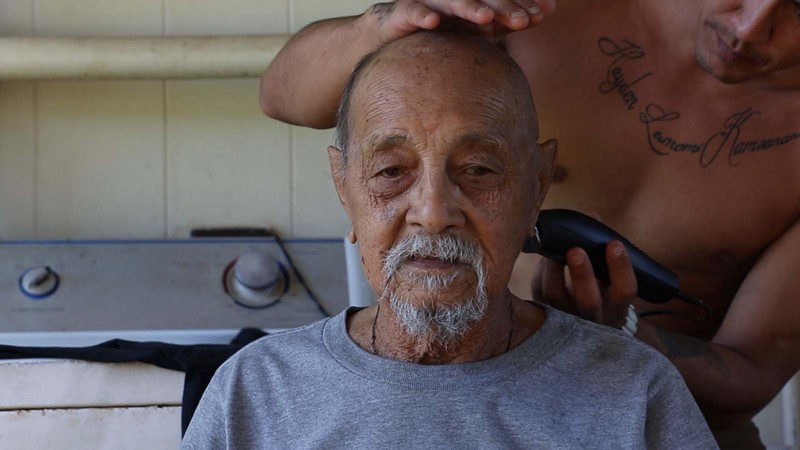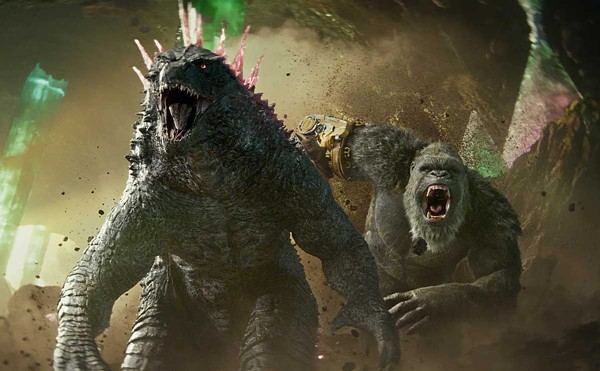While always speaking in a language of abundance, Hollywood has a way of crowding out all but a few kinds of stories. With Cane Fire, Anthony Banua-Simon explores both the outcomes and precursors of this long-running tendency, examining the pull of media narratives on the Hawaiian island of Kaua’i for viewers both there and outside. Collaging together interviews with family members, laborers, indigenous activists, and dealers in Hawaii’s scant land resources alongside media stories more widely shared about the island, Banua-Simon feels out a path toward the relationship between them all. But those movies depicting Hawaii as an escapist paradise (chiefly for wealthy whites) less form his subject than they do provide a bridge, connecting generations of experience in a place transformed time and again by colonial and corporate occupiers. Despite its director’s family history there, Cane Fire favors a big-picture, descriptive look at the dynamics of culture and power on Kauai’i over a more acute or intimate one, making it read better as a roving meditation than as a diary film or even an exposé, even as those documentary forms take up portions of its running time.
The film takes its title, though, from a quite pointed mainstream work: one whose complete form has now been lost to time. In 1934, Lois Weber’s White Heat (which carried the alternate title of Cane Fire, too) gave the island its first role in a Hollywood movie, dramatizing tensions which have barely ebbed today. Telling the story of a sugar worker who falls for the plantation’s owner as the groundwork is laid there for a labor revolt, the film’s synopsis alone captures many of the tensions that would evolve over the unequal history Banua-Simon seeks to restore to prominence and public view. While the battle lines have shifted (tourism’s long supplanted most Hawaiian agriculture as the island’s dominant industry, and the island fell under U.S. control well before its achieving statehood in 1959), the axes of inequality and power remain quite similar. The same “Big Five” players that once monopolized the sugar and pineapple industries now control resorts and other tentpoles of local industry; the remaining available real estate is gradually being acquired by tech moguls exemplified here by Mark Zuckerberg, along with other more anonymous occupiers just as idly rich.
Both geographically and culturally, the outcomes of this have proven as deliberate as they have familiar, well-tested forms of colonial praxis: forcing both native Hawaiians and immigrants of color (and, over time, their descendants) to the margins of society and public view. In the case of Weber’s sympathetic film, which stands in here for a suppressed history as much as it remains a lost artifact to puzzle over in itself, depictions of both cross-racial intermingling and incendiary labor action were suppressed by censors at its release, who seemed to fear copycats on both fronts. As Banua-Simon clarifies across his hopscotch editing patterns, enforced segregation and labor suppression formed cornerstones of island life as surely as they quietly undergirded the stories filmed there, and those promoted locally as well. But such visible forms of oppression have been smoothed over by newer, doctored stories, often concocted by hotel barons and middle management — who gleefully incorporate fragments of indigenous culture in the name of marketing authenticity. These new tales demonstrably do more than just reside in public consciousness; they displace the actual, quite violent histories of native Hawaiians’ dispossession of their own land, rights, and resources — so effectively that even they often struggle to grasp what’s been lost.
The effects of these far-reaching monopolies and colonial trends seem to touch almost every aspect of life on Kauai’i, making documentation of this same history on so many fronts a struggle to pack into Cane Fire’s 90 minutes. As a result, Banua-Simon’s narrative is sometimes forced to glide too quickly between its subjects. Even as the shared history its maker chronicles finds unity through long-running actors, politics, and themes, more than once, I wished it could have focused on a scene or character for quite a while longer.
There’s the island’s organized labor movement among sugar growers, for one, whose remnants have been trampled by consolidated monopolistic power. As part of this, there are residents still living in cost-stabilized plantation housing, rare (and modest) non-dominant beneficiaries of a plainly unjust system. There’s an indigenous-focused activist community, too, quartered on ancestral grounds which still host the defunct Coco Palms resort, closed since a hurricane in 1992. (A focused examination of the space the hotel occupied stretching before and after its operation would offer just one way to get at most of the themes that fill out Cane Fire’s running time). Just as fascinating, too, are the perverse dynamics of economic power on the island, which leave workers with an air of gratitude toward wealthy employers for even the most menial of service jobs: symptoms, plainly, of generations of repressive control.
Each or several of these subjects could make for a rich documentary on their own. But Banua-Simon’s project is in large part personal — and his family history seems to have been a guiding force in both Cane Fire’s roving construction and its unadorned narration. In working to balance this personal history with a broader one, he’s created a project that feels in an immediate way more descriptive than suggestive, often pointing to portions of history its structure doesn’t quite leave space to explore. At the same time, it more abstractly suggests a counter-history, and a rebuttal to the century of media texts it samples throughout. If Weber’s White Heat and Banua-Simon’s Cane Fire each tell two versions of the same tale, they’re but snapshots of a history set to run long before and after. Just as the old Cane Fire’s no narrative or historical beginning, this new Cane Fire’s not meant to be an end.
Stay connected with Detroit Metro Times. Subscribe to our newsletters, and follow us on Google News, Apple News, Twitter, Facebook, Instagram, Reddit, or TikTok.






